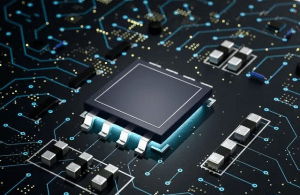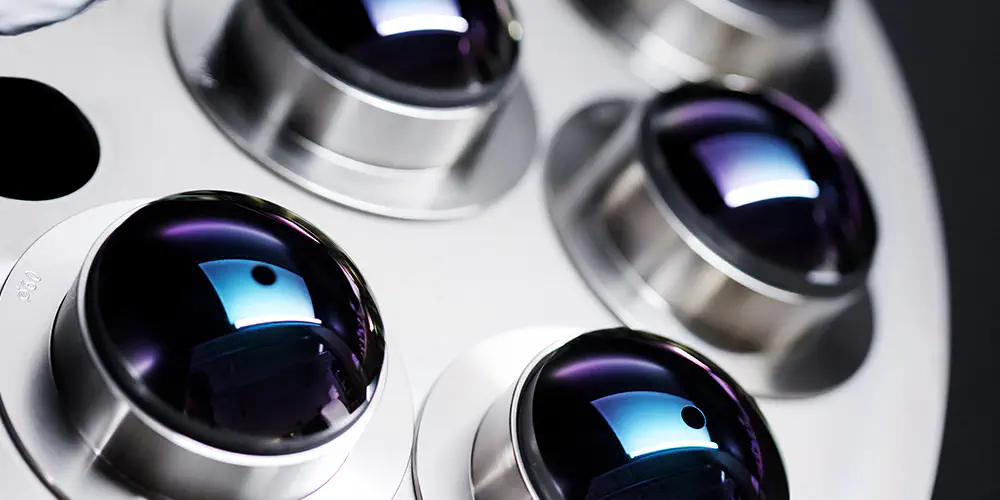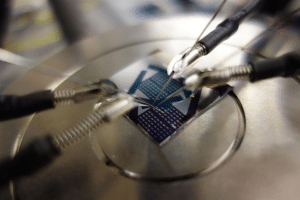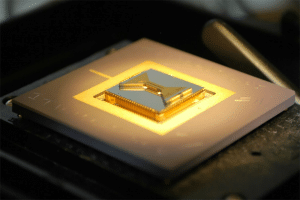
Why choose electron beam for vacuum evaporation (EB-PVD)

What is vacuum evaporation
Vacuum evaporation is the physical phase change and diffusion process in which a substance changes from a solid or liquid state to a gaseous state in a vacuum, a pressurized process. As the evaporation process takes place in a vacuum, the evaporation temperature is lower than at standard atmospheric pressure, and the evaporation rate is faster than in the atmosphere, which makes the metallic materials with generally higher melting and boiling points in the standard state easier to evaporate in a vacuum, and able to be used in engineering applications.
Why EB-PVD
Substance evaporation process in a vacuum, from the point of view of the evaporation rate classification, divided into slow evaporation process and rapid evaporation process two types, also known as weak evaporation process and strong evaporation process. The evaporation rate refers to the mass of the substance evaporated per unit time per unit area. Substance evaporation rate in a vacuum, the theory is mainly affected by the evaporation of the temperature of the surface and the saturation vapor pressure and other physical properties, but in practice, the evaporation process needs to be considered comprehensively, including the transfer of heat, the diffusion process of the substance, the process of the phase transition on the evaporation of the impact of the evaporation process.
In a vacuum, you want to make the substance evaporate quickly, you need to heat the substance, there are many different heating methods, including electron beams, laser beams, resistive heating, magnetron sputtering and other methods, which is relatively widely used is thebeam of electronsand laser heating methods. Both methods have the advantages of high energy density and controllable melting area. E-beam is easier to engineer and realize compared to laser beam.
At present, the most important application techniques of vacuum evaporation include vacuum evaporation coating technology, vacuum evaporation metallurgy technology vacuum evaporation powder technology, etc. The vacuum evaporation treatment of waste belongs to the application of vacuum evaporation metallurgy technology. The use of vacuum evaporation method to prepare a variety of thin film materials and coatings has been a more mature application of technology. In a high vacuum environment, heating the water-cooled crucible in the material to make it evaporate, the evaporated gaseous material diffusion and condensation to the substrate, thus forming a layer of micron or nano-scale thin films. These films or coatings mostly have optical, electrical and other functional properties, and their thicknesses are mostly at the micron or nanometer level. The evaporation rate of the preparation process is slow, belonging to the slow evaporation process, and the amount of evaporation is easy to control.
When the metal is heated to a certain temperature, the electrons on its surface obtain enough thermal energy to overcome the binding force of the metal surface, thus breaking away from the metal surface to form a free electron cloud. These free electrons under the action of electric and magnetic fields, will move in a certain direction to form an electron beam flow.
Advantages of choosing EB-PVD technology
1. High deposition rates:
E-beam evaporation utilizes a high-energy electron beam to directly heat the material, so higher deposition rates can be achieved. This means that more material can be deposited in a shorter period of time, thus increasing productivity.
2. Uniform film thickness:
Electron beam evaporation provides a precise control mechanism that ensures the formation of a uniform film on the surface of the substrate. This uniformity is critical for many applications, especially in the manufacture of optical and electronic devices.
3. High purity films:
Since electron beam evaporation takes place in a vacuum environment, impurities and contaminants from the air are avoided. This means that the resulting films are typically of high purity and are suitable for applications requiring high material purity.
4. Applicable to a wide range of materials:
E-beam evaporation can be used to deposit many different types of materials, including metals, oxides, silicon, and more. This makes it useful for a wide range of applications in the preparation of composite and alloy films as well as a variety of functional films.
5. Applicable to complex shapes:
E-beam evaporation requires less shape and geometry of the substrate than some other deposition techniques. This means that it is possible to coat substrates with a variety of complex shapes, including micro- and nanostructures and three-dimensional shapes.
6. Compatibility with other technologies:
E-beam evaporation can be combined with other techniques such as ion beam etching and physical vapor deposition to achieve more complex thin film structures. This flexibility gives it an advantage in the preparation of multilayer films and nanostructures.
We offer Electron Beam Evaporation Deposition (EB-PVD) OEM Customization Services, Feel free to leave a message to inquire.
Preparation of titanium nitride (TIN) thin films by ALD process
Preparation of titanium nitride (TiN) thin films by ALD process via atomic layer deposition
Exploring 4 applications of silicon nitride thin-film windows in bioscience
This paper will describe the properties and advantages of silicon nitride thin film windows and discuss four common applications in the life sciences.
Science Guide: Introduction, Principle and Application Scenarios of Silicon Nitride Thin Film Windows
Science Guide: Introduction, Characteristics and Application Scenarios of Silicon Nitride Thin Film Windows Nitride



.jpg)